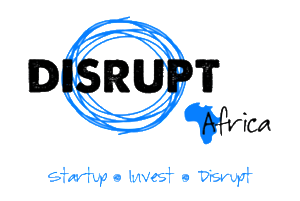In an exclusive three part guest post series written for Disrupt Africa, David B. McGinty, team leader of the Human Development Innovation Fund (HDIF) in Tanzania, looks at the value of impact of funder language and the push to innovate on entrepreneurs.
In the past year, I’ve had a cool job that includes being a judge and investor for numerous social entrepreneurship pitch and funding competitions for social enterprises across Africa—including Reach for Change and Tigo’s Digital Changemakers, SLUSH Impact, World Bank’s Negawatt Challenge, and HDIF. This article is the first of three reflecting on these experiences, as well as collaborations with impact investors like Acumen, incubators like DTBi and Growth Africa, and hubs like KINU and Buni Hub.
Indubitably, high potential entrepreneurs with cool ideas are out there looking to create positive impact across Africa. A dynamic mix of funders of African startups exists, from angel investors to private equity firms to impact investors to international donor agencies. Individual investors have different strategies, priorities, methods, and risk profiles. Different types of investors use unique languages that can send entrepreneurs into a mental tailspin—from basic investor lingo like “return on capital” to social impact language like “creating shared value” to donor agency language like “making markets work for the poor” (m4p).
Some investor approaches are even murky to the investors. A corporate investment philosophy may exist but it is flavored by the character and experience of the team managing the investment. And, as donor agencies continue shifting towards private sector development, professionals with minimal business training or experience may manage private sector investments.
Notwithstanding, an entrepreneur may find herself pitching a mix of investors at the same time. In the midst of the chaos, a few tricks can help improve a pitch to one or multiples types of investors.
Remember the old adages “know thyself” and “to thine own self be true.”
An entrepreneur should know the team’s strengths, weaknesses, unfair advantages, and, especially, what the team is not. A self-aware entrepreneur with a clear, consistent and competent storyline through a pitch is extremely powerful despite pitching a mix of investors.
For example, a team of civil engineers planned to pitch me an infrastructure solution for urban water supply. The team had plenty of education and experience in designing infrastructure solutions: materials, construction techniques, and water flow analysis. They knew the market and technologies; however, the team was told that I have a significant ICT investment focus. Instead of staying with their strengths and tested solutions around which the actual business is being built, the team quickly pulled together a high level concept for an add-on ICT solution to their infrastructure technology. The pitch didn’t pass the smell test. Good people did not stay true to themselves and chased the investor’s approval.
Second, buzzwords can be a trap.
The current social investment world is full of frameworks, buzzwords, and hip lingo. These are often preceded by the phase “everyone must….” Every successful entrepreneur MUST ‘innovate, collaborate, co-create, use human centered design, create shared value, focus on the triple bottom line, etc.’ (For a funny look at startup buzzwords, check out udemy’s infographic.) These terms all mean or meant something very real and definite, but in common use they do not help an entrepreneur highlight her greatness. Unless the start-up is taking one of these approaches in a meaningful way that is critical to the investor, stay clear of buzzword.
Finally, innovation alone does not sell a business.
Google the phrase “innovate or die” and it becomes clear why so many entrepreneurs begin to use entrepreneur and innovator synonymously; entrepreneurs are being trained that the absence of innovation is a terminal illness. Many entrepreneurs pitch themselves as innovative or focus on an innovation at the core of their enterprise. Irrespective of how innovative an enterprise or its founder may be, the business fundamentals must be clear and logical in any pitch. Watch Shark Tank and see how many cool businesses fail to find an investor because the entrepreneur cannot explain or defend the target market, marketing strategy, competition, pricing, valuation, production process, or the value proposition of the team.
Moreover, there are great, investible business models worthy of replicating that may not be the most innovative. Existing businesses may be unable to meet total market demand. A new player with better fundamentals may be needed. A new enterprise may simply have a great unfair advantage to add on to an existing model: singular focus, access to information or networks, geographic advantage, or lower labor costs that are unable to be acquired. Richard Branson’s recent post on Entrepreneur provides a few basic ways resource restrained small business can innovate.
If an enterprise is pitched as an innovation, be sure to know exactly what is innovative about the business. Innovation is often confused with research, creativity, a new business, ICT, mobile technologies, and, simply, ideas that are new to a person or organization. Try this simple formula:
Innovation = Science + Entrepreneurship + Creativity
Innovation is often technology enabled, but having a technology aspect does not automatically make an idea innovative.
A solid user-friendly innovation framework to help determine what innovation(s) are in a business is Doblin’s 10 Types of Innovation, which provides a simple but proven language to identify, differentiate, support and cultivate an innovation. With a little tweaking, the framework is equally applicable to social enterprises. A good starter for a broader understanding of innovation is Harvard Business Review’s 10 Must Reads on Innovation.
Part II of this series will appear next week and explore four aspects of enterprise development required to scale innovations.


